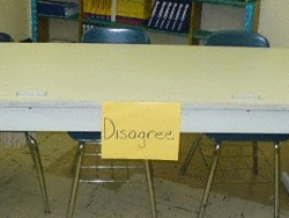
Overview of the Module
This module gives students a real look at the inner workings of the internet and provides opportunities for students to learn ways to remain safe.
What exactly will teachers find in this module?
In this module, teachers will find anchor charts detailing ways to practice internet safety, internet precautionary situations, and lessons that will help students to practice interacting safely online.
Why is this module important?
This module is important because there are predators who prey on the naiveness that young children display online. Through this module, students will see the value in staying safe and keeping personal identifiers private online.
How does this module connect to bullying?
This module connects to bullying because it shows how innocent posts on the internet can be interpreted as cyberbullying.
Content
Additional Resources for Teachers
- Being safe on the internet:
- Internet Safety BrainPOP:
- Digital Footprint:
Lesson Topics
Choosing Safe
Lesson Goals: This lesson will showcase to students the importance of remaining safe and confidential while engaging in activities over the internet.
How does this lesson connect to bullying? This lesson connects to bullying because it shows students ways to be safe online and subsequently lessens their chances of being subjected online harassment or cyberbullying.

Materials/Resources for Lesson:
- Being safe on the Internet:
- 40 Ways to Leave a Lesson:
- Internet safety pack (anchor chart)-teachers pay teachers
- Chart paper
- Markers
Lesson Structure:
- Open:
- The teacher will show a YouTube video that shows the importance of internet safety: https://www.youtube.com/watch?v=HxySrSbSY7o
- The teacher will then call students divide students into groups and give each group an internet safety card. The students will analyze and summarize their card with their group. After a brief moment, each group will summarize what they’re safety tip was, to the class, and how it can be practiced in real life.




- Body:
- As a class, we will complete online safety chart. Each student will be given a sticky note, students will be assigned a different a topic to write about. For example, some students will write information that is safe to put online, some will write information that is moderately safe, and others will write information that should never be shared.

- Close:
- To close, students will illustrate an internet awareness postcard. Their postcard will be used an exit slip.
What is Your Digital Footprint?
Lesson Goals: This lesson will encourage students to think about how they are portraying themselves online and whether it aligns with choosing kindness.
How does this lesson connect to bullying? This lesson connects to bullying because it requires students to think about the things they post online and analyze whether they portray positivity.

Materials/Resources for Lesson:
- Construction paper
- Notebook paper
- Art mediums
- BrainPOP:
- Digital footprint:
- Internet safety pack (discussion questions)-teachers pay teachers
Lecture Structure
- Open:
- The class will watch an online safety video on BrainPOP to reiterate its importance: https://www.brainpop.com/technology/digitalcitizenship/onlinesafety/
- Then students will be broken into small groups of 3-4. Each group will randomly pick from a list of scenarios written on notebook paper. In their group, students will discuss what they each would do in that situation and is there a safer way to handle it.
- Discussion topics:
- You receive an email that says you won a free laptop. All you have to do is respond to the email.
- You find a great website that gives you Minecraft cheats. But you have to give them your
address and phone number first. - You get an email with the subject line “you win”. It contains an attachment for you to
open to claim your free prize. - Someone sends you a text with a picture of themselves. You don’t know the person. You
wonder if you should send them a text back asking them who they are. - Your parents do not let you chat online while they are not home. Your
friend is over and wants to chat online even though your parents are not home. - A friend sends you a video of a boy being beaten up. You do not like the video but you
don’t want to get your friend in trouble.
- Body:
- After a few moments of the groups discussing, they will come back together as a whole class. The teacher will then explain to the students that they will be making a representation of their own digital footprint. The teacher will explain that their digital footprint is a collection of things that they share about themselves online. The teacher will also explain the importance of leaving a positive footprint online. The teacher will instruct students to brainstorm what mark they want to leave on the world and write it in a complete sentence on a sheet of paper. Then the students will condense their sentences to one word that they will add to their footprint. The students will then cut out a free-handed footprint (or the teacher can print of a footprint template). The student will their attributes to their footprint along with illustrations and color (much like the picture below).

- Close:
- The students will take turns presenting their footprints, which will be hung around the room or in the hall.








































